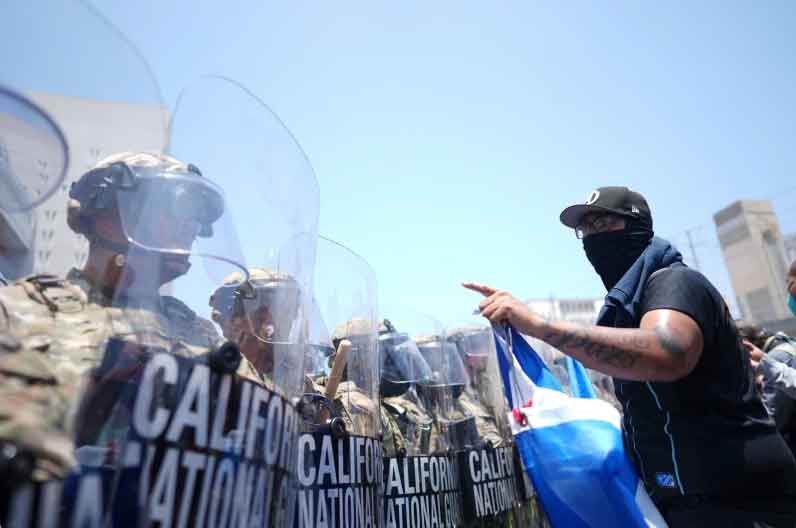Thousands Rally Against ICE Raids as Federal Forces Arrive in L.A.
Tensions boiled over in Los Angeles on June 6, 2025, following coordinated ICE operations near Home Depot parking lots, clothing warehouses and other sites across the city.

By OGNSC Staff
Downtown Erupts After Raids
Tensions boiled over in Los Angeles on June 6, 2025, following coordinated ICE operations near Home Depot parking lots, clothing warehouses and other sites across the city. Federal agents arrested at least 44 individuals, prompting hundreds of community members — including day laborers — to gather in protest at the Westlake District location. Clashes soon broke out: some demonstrators hurled chunks of concrete; police responded with tear gas, pepper spray and flash‑bang grenades. The LAPD declared a citywide tactical alert, and by nightfall pronounced the assembly unlawful.
Escalation Beyond Downtown
On June 7, demonstrations spread to Paramount and Compton. Protesters erected impromptu barricades using shopping carts and debris, while ICE and local law enforcement deployed flash‑bangs and pepper balls to clear crowds. At least two injuries were reported, and one vehicle caught fire before firefighters intervened. That same day, labor leader David Huerta — detained at a raid — was hauled away in handcuffs, a move that triggered solidarity rallies downtown.
Federal Backup and Political Clash
In a controversial move, President Trump—citing Title 10 authority—federalized California’s National Guard and dispatched 2,000 soldiers to L.A., bypassing Governor Gavin Newsom’s consent. Secretary of Defense Hegseth also placed up to 700 active‑duty Marines at Camp Pendleton on high alert, with deployment to federal properties looming.
Governor Newsom and Mayor Karen Bass swiftly condemned the action. Newsom called the deployment “illegal and immoral,” promising to sue the Trump administration for violating state sovereignty Bass, identifying L.A. as a sanctuary city, described the presence of troops as unnecessary, stating, “things were not out of control in the City of Los Angeles”.
Violence, Vandalism and Journalistic Risk
While peaceful demonstrations predominated, several incidents turned destructive. Protesters blocked the 101 Freeway, smashed storefronts, and torched at least five Waymo autonomous vehicles downtown. A British photojournalist and an Australian live TV reporter were struck by rubber bullets during coverage, highlighting the dangers facing the press.
According to local officials, some 56 arrests had been made, with six law enforcement officers injured. Allegations ranged from looting and attempted murder to vandalism and assaults on federal agents.
Community Voices and Wider Fallout
Most protesters remained peaceful, waving U.S. and Mexican flags and demanding an end to mass deportations. Demonstrators emphasized that immigrant communities, particularly Latino workers — many of whom are essential workers and parents of U.S. citizens — were under siege. Mexico’s consul reported at least 35 detained Mexican nationals by June 8, demanding due process while asserting, “they are not criminals”.
San Francisco and other U.S. cities joined the wave of solidarity. San Francisco arrested over 150 protesters amid similar sentiments of resistance and concern over deportation policies .
What’s at Stake
The extraordinary deployment — the first use of federalized National Guard without a governor’s request since 1965 — has raised alarms among civil rights advocates and constitutional scholars. Critics argue the move is chilling dissent and setting a dangerous precedent for federal intervention in state affair.
As demonstrations enter their fourth day, calls for restraint and dialogue grow. Newsom continues legal action, Bass urges calm and accountability, and immigration advocates seek justice for detained workers. But with federal forces in place and protests ongoing, Los Angeles braces for further unrest in a crisis that touches on immigration, federal authority and the right to protest.









